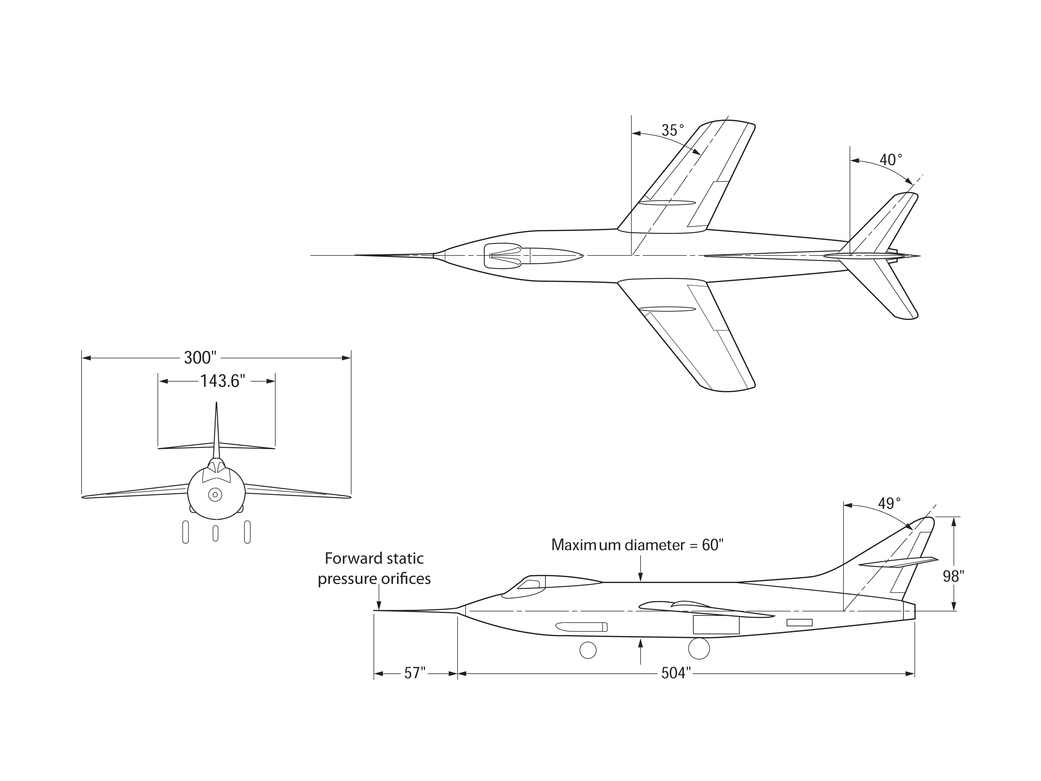
EG-0022-01
The Douglas D-558-II “Skyrockets” were among the early transonic research airplanes like the X-1, X-4, X-5, and X-92A. Three of the single-seat, swept-wing aircraft flew from 1948 to 1956 in a joint program involving the National Advisory Committee for Aeronautics (NACA), with its flight research done at the NACA’s Muroc Flight Test Unit in California, redesignated in 1949 the High-Speed Flight Research Station (HSFRS); the Navy-Marine Corps; and the Douglas Aircraft Co. The HSFRS is now known as the NASA Dryden Flight Research Center. The Skyrocket made aviation history when it became the first airplane to fly twice the speed of sound.
The II in the aircraft’s designation referred to the fact that the Skyrocket was the phase-two version of what had originally been conceived as a three-phase program, with the phase-one aircraft having straight wings. The third phase, which never came to fruition, would have involved constructing a mock-up of a combat-type aircraft embodying the results from the testing of the phase one and two aircraft.
The D-558-II was first flown on Feb. 4, 1948, by John Martin, a Douglas test pilot. An NACA pilot, Scott Crossfield, became the first person to fly faster than twice the speed of sound when he piloted the D-558-II to its maximum speed of Mach 2.005 (1,291 mph) at 62,000 feet altitude on Nov. 20, 1953. Its peak altitude, 83,235 feet, a record in its day, was reached with Lt. Col. Marion Carl at the controls.
The three aircraft gathered a great deal of data about pitch-up and the coupling of lateral (yaw) and longitudinal (pitch) motions; wing and tail loads, lift, drag, and buffeting characteristics of swept-wing aircraft at transonic and supersonic speeds; and the effects of the rocket exhaust plume on lateral dynamic stability throughout the speed range. (Plume effects were a new experience for aircraft.) The number three aircraft also gathered information about the effects of external stores (bomb shapes, drop tanks) upon the aircraft’s behavior in the transonic region (roughly 0.7 to 1.3 times the speed of sound).
In correlation with data from other early transonic research aircraft such as the XF-92A, this information contributed to solutions to the pitch-up problem in swept-wing aircraft…Learn more

























